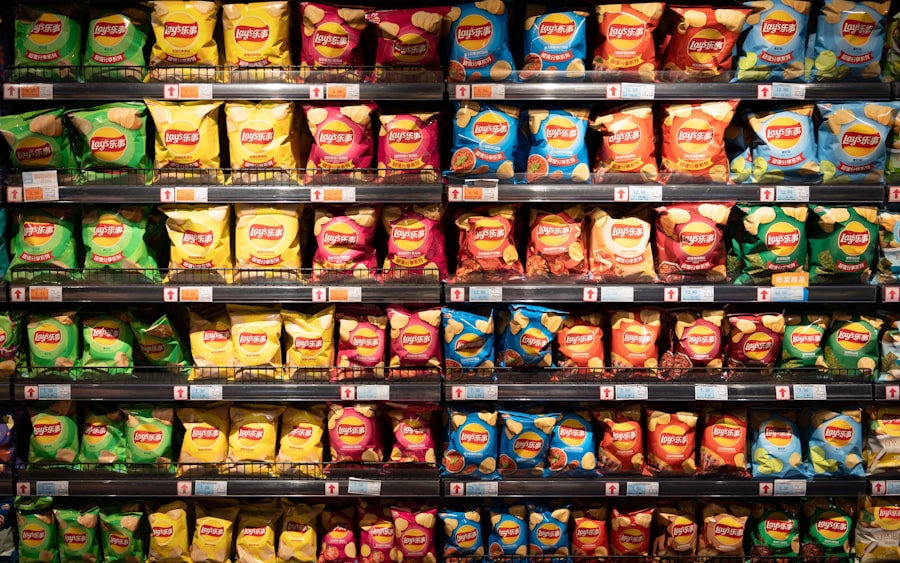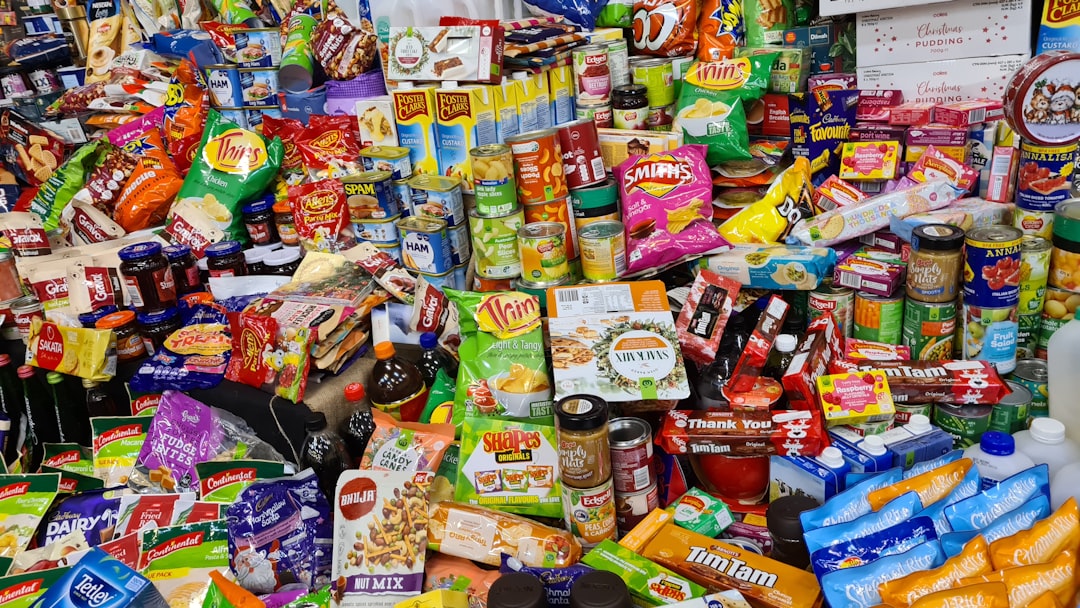In recent years, the phenomenon of shrinking snacks has become increasingly prevalent, capturing the attention of consumers and industry analysts alike. This trend, often referred to as “shrinkflation,” involves reducing the size or quantity of food products while maintaining or even increasing their prices. As consumers navigate grocery aisles filled with familiar brands, they may find themselves confronted with smaller packages and fewer servings, leading to a sense of confusion and frustration.
The reasons behind this trend are multifaceted, encompassing economic pressures, consumer behavior, and evolving market dynamics. The shrinking of snacks is not merely a passing fad; it reflects broader changes in the food industry and consumer expectations. As companies strive to balance profitability with consumer demand, they often resort to reducing portion sizes as a cost-cutting measure.
This practice raises important questions about the implications for consumer satisfaction, health, and environmental sustainability. As the trend continues to unfold, it becomes essential to explore its various dimensions and understand how it shapes the modern snacking landscape.
Key Takeaways
- The trend of shrinking snacks is on the rise, impacting consumer choices and brand loyalty.
- Shrinking snacks are often a result of cost-cutting measures by companies to maximize profits.
- Consumers are expressing frustration and disappointment with smaller snack sizes and higher prices.
- Portion control and overeating are potential health implications of shrinking snacks.
- Shrinking snacks can have a positive environmental impact through reduced packaging and waste.
The Economics of Shrinking Snacks: Cost-cutting Measures
The economic rationale behind shrinking snacks is rooted in the need for companies to manage rising production costs. Factors such as increased raw material prices, labor costs, and transportation expenses have compelled manufacturers to find ways to maintain profit margins without alienating consumers. By reducing the size of their products, companies can offset these costs while still presenting their offerings as affordable options.
This strategy allows them to navigate a competitive market where price sensitivity is paramount. Moreover, the practice of shrinkflation is often masked by clever marketing tactics. Companies may redesign packaging to emphasize value or highlight new features, diverting attention from the fact that consumers are receiving less product for their money.
This approach can create a perception of innovation while simultaneously allowing brands to maintain their pricing structures. However, this strategy can backfire if consumers feel deceived or if they perceive that they are not receiving fair value for their purchases.
Consumer Reaction: Frustration and Disappointment

As consumers become increasingly aware of the trend of shrinking snacks, many express feelings of frustration and disappointment. The initial excitement of purchasing a favorite snack can quickly turn to dismay upon discovering that the package contains fewer items or that the serving size has been significantly reduced. This sense of betrayal can lead to a decline in brand loyalty, as consumers seek alternatives that offer better value for their money.
Social media platforms have amplified these sentiments, with consumers sharing their experiences and frustrations with shrinking snacks. Online discussions often highlight specific brands and products, creating a ripple effect that can impact a company’s reputation. As consumers voice their concerns, brands must navigate the delicate balance between cost management and maintaining customer satisfaction.
Failure to address these issues can result in long-term damage to brand trust and loyalty.
Health Implications: Portion Control and Overeating
| Health Implications | Portion Control | Overeating |
|---|---|---|
| Weight Management | Helps in managing weight by controlling calorie intake | Can lead to weight gain and obesity |
| Heart Health | Can improve heart health by reducing risk of heart disease | Increases risk of high blood pressure and heart disease |
| Digestive Health | Supports healthy digestion and prevents digestive issues | Can cause digestive discomfort and issues like acid reflux |
| Energy Levels | Helps in maintaining steady energy levels throughout the day | Leads to energy crashes and fatigue due to excessive food intake |
While some may argue that smaller snack sizes promote portion control and healthier eating habits, the reality is more complex. For many consumers, the act of purchasing a snack is often tied to emotional or habitual behaviors rather than strict dietary considerations. When faced with smaller portions, individuals may find themselves reaching for additional snacks to satisfy their cravings, ultimately leading to increased caloric intake rather than the intended moderation.
Furthermore, the psychological impact of shrinking snacks cannot be overlooked. The perception of receiving less can trigger feelings of deprivation, prompting individuals to overindulge in other food items or seek out larger quantities of snacks in an attempt to compensate for what they perceive as a loss. This cycle can undermine efforts toward healthier eating habits and contribute to unhealthy patterns of consumption.
Environmental Impact: Reduced Packaging and Waste
On a more positive note, the trend of shrinking snacks may have environmental implications worth considering. With smaller packages often requiring less material for packaging, there is potential for reduced waste in terms of both production and disposal. Companies that adopt more sustainable practices in their packaging can appeal to environmentally conscious consumers who prioritize eco-friendly choices.
However, this potential benefit must be weighed against the overall environmental impact of food production and distribution. While smaller packages may reduce waste at the consumer level, they do not necessarily address larger issues such as food waste throughout the supply chain or the carbon footprint associated with transportation. As consumers become more aware of these complexities, they may demand greater transparency from brands regarding their environmental practices.
Brand Loyalty: How Shrinking Snacks Affect Consumer Trust

The relationship between shrinking snacks and brand loyalty is intricate and multifaceted. As consumers grapple with feelings of disappointment over reduced portion sizes, their trust in brands may wane. When familiar products undergo changes that are perceived as detrimental to value or quality, consumers may seek alternatives that align more closely with their expectations.
Brands that fail to communicate openly about changes in their products risk alienating loyal customers. Transparency regarding ingredient sourcing, production practices, and pricing strategies can help mitigate negative perceptions associated with shrinkflation. By fostering a sense of trust and accountability, companies can work to retain their customer base even in the face of necessary adjustments.
Marketing Strategies: Packaging and Perception
In response to the trend of shrinking snacks, companies have adopted various marketing strategies aimed at reshaping consumer perceptions. Packaging plays a crucial role in this endeavor; brands often redesign their products to emphasize new features or benefits while downplaying size reductions. Eye-catching graphics and bold claims can distract from the reality of smaller portions, allowing companies to maintain sales despite consumer dissatisfaction.
Additionally, marketing campaigns may focus on promoting healthier lifestyles or convenience factors associated with smaller snacks. By framing these changes as positive adaptations rather than cost-cutting measures, brands can attempt to reposition themselves in the minds of consumers. However, this approach requires careful navigation; if consumers feel manipulated or misled by marketing tactics, it can lead to backlash and further erosion of brand loyalty.
The Role of Ingredients: Substitutions and Quality
As companies grapple with rising costs associated with ingredients, some have turned to substitutions that may impact product quality. In an effort to maintain profit margins while reducing portion sizes, manufacturers may opt for cheaper alternatives that compromise taste or nutritional value. This shift can further exacerbate consumer dissatisfaction as individuals notice changes in flavor or texture.
Moreover, ingredient transparency has become increasingly important in today’s market. Consumers are more informed than ever about what goes into their food, leading them to scrutinize labels for quality indicators. Brands that prioritize high-quality ingredients and communicate this commitment effectively are likely to fare better in a landscape where shrinking snacks are becoming the norm.
Industry Trends: Competition and Market Forces
The trend of shrinking snacks is not occurring in isolation; it is influenced by broader industry trends and market forces. As competition intensifies among food manufacturers, companies are constantly seeking ways to differentiate themselves while managing costs. This dynamic creates an environment where shrinkflation becomes an appealing strategy for maintaining profitability without sacrificing market share.
Additionally, changing consumer preferences play a significant role in shaping industry trends. As health-conscious choices gain traction among consumers, brands must adapt their offerings accordingly. This shift may lead some companies to prioritize smaller portion sizes as a means of promoting healthier eating habits while navigating economic pressures.
The Future of Snacking: Innovations and Adaptations
Looking ahead, the future of snacking is likely to be characterized by continued innovation and adaptation in response to evolving consumer demands.
This could involve reimagining product formulations or exploring new packaging solutions that resonate with environmentally conscious consumers.
Moreover, advancements in technology may pave the way for more personalized snacking experiences. Companies could leverage data analytics to better understand consumer preferences and tailor offerings accordingly. By embracing innovation while remaining attuned to consumer concerns about portion sizes and value, brands can position themselves for success in an ever-changing market.
Tips for Consumers: Making Informed Choices in a Shrinking Snack Market
In a landscape where shrinking snacks are becoming increasingly common, consumers must equip themselves with knowledge to make informed choices. One effective strategy is to read labels carefully and compare serving sizes across different brands. By understanding how much product they are actually receiving for their money, consumers can make more educated purchasing decisions.
Additionally, exploring alternative snack options—such as bulk purchases or homemade snacks—can provide greater value while allowing individuals to control portion sizes more effectively. Engaging with brands through social media or customer feedback channels can also empower consumers to voice their concerns about shrinkflation and advocate for transparency in product offerings. In conclusion, the trend of shrinking snacks reflects a complex interplay of economic pressures, consumer behavior, and industry dynamics.
As companies navigate this landscape, it is essential for them to prioritize transparency and quality while remaining responsive to consumer needs. For consumers, staying informed and proactive can help them navigate this evolving market while making choices that align with their values and preferences.
In recent years, many consumers have noticed that their favorite snacks are getting smaller, a phenomenon often attributed to a practice known as “shrinkflation.” This trend involves reducing the size or quantity of a product while maintaining its original price, effectively increasing the cost per unit. An insightful article on this topic can be found on How Wealth Grows, which delves into the economic factors driving this change and its impact on consumer behavior. For more information, you can read the full article by visiting How Wealth Grows.
WATCH NOW! How Grocery Prices Are a Hidden Corporate Tax 🤑🤑🤑🤑
FAQs
Why are my favorite snacks getting smaller?
Snack companies are reducing the size of their products as a way to manage costs and maintain profit margins. This can be due to rising ingredient and production costs, as well as changes in consumer demand and purchasing behavior.
How much smaller are snacks getting?
The reduction in size can vary depending on the product and brand, but it is common for snacks to shrink by 10-20% or more. This can result in fewer servings per package and a higher cost per ounce for consumers.
Are there any other reasons for the shrinking size of snacks?
In addition to cost management, some snack companies may also be responding to consumer demand for healthier portion sizes. Smaller snacks can help people manage their calorie intake and make more mindful eating choices.
How can consumers cope with smaller snacks?
Consumers can cope with smaller snacks by being mindful of portion sizes and considering alternative snack options. It’s also important to compare prices and unit sizes to ensure that you are getting the best value for your money.
Will the trend of smaller snacks continue?
It is likely that the trend of smaller snacks will continue as companies seek to manage costs and respond to consumer preferences. However, consumer feedback and purchasing behavior can also influence the decisions of snack companies in the future.
